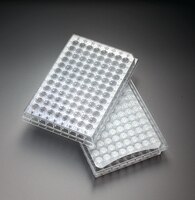MultiScreen Plates and Millicell inserts with PTFE Membranes
PTFE membranes have low reactivity, low protein binding and are extremely resistant to solvents and harsh chemicals.
More
PTFE membranes have low reactivity, low protein binding and are extremely resistant to solvents and harsh chemicals. Less
More>>
Less<<

Recommended Products
Overview
Specifications
Ordering Information
Documentation
Related Products & Applications
Product Families

MultiScreen plates with specialty membranesMultiScreen plates are available with a variety of specialty membranes for different applications.Learn More >> |

MultiScreen plates and Millicell Inserts with MCE membraneUsed for Elispot assays, bacterial screening, ELISA or viral infection studiesLearn More >> |

Cell Cultureware and AccessoriesPre-coated ECM multiwell plates in multiple formats including Collagen, and Fibronectin.Learn More >> |

MultiScreen Plates and Millicell Inserts with Polycarbonate and PET membranesThe Isopore membrane is a polycarbonate, track-etched screen filter recommended for all analyses in which the sample is viewed on the surface of the membrane.Learn More >> |

MultiScreen® Filter Plates with Durapore® MembraneThese Multiscreen filter plates offer High-throughput filtration with low protein bindingLearn More >> |

MultiScreen® Filter Plates with Glass Fiber FiltersHigh-throughput clarification and prefiltrationLearn More >> |
Related Products By: Application Facete
| Protein Purification |
| Sample Preparation |
| Dialysis and Filtration |
Related Products By: Brand Facete
| MultiScreen™ |
Categories
| Life Science Research > Cell Culture and Systems > Cell Culture Flasks, Plates, & Slides > Multiwell Plates |
PTFE Membrane Filters
Fluoropore membrane is a PTFE membrane bonded to a high density polyethylene support. Fluoropore provides broad chemical compatibility, low protein binding and is available in both hydrophilic and hydrophobic membranes.
Biopore membrane exhibits low protein binding, low fluorescence and is very useful for cell growth and visualization. The membrane exhibits little to no background when using fluorescent stains. The membrane is transparent which provides optimum viewing of cells.






